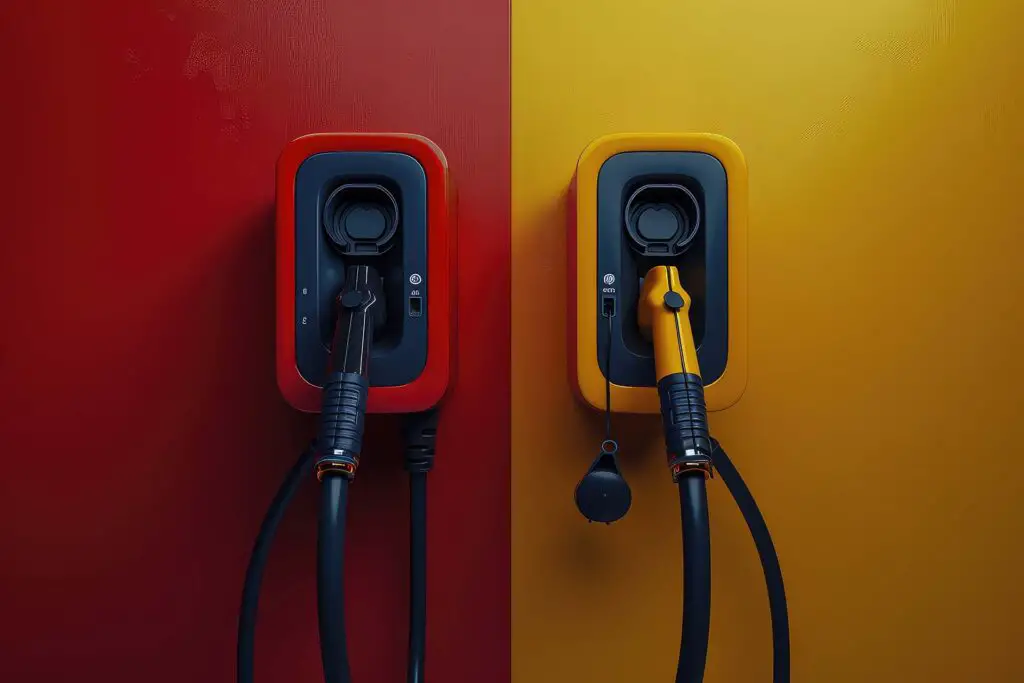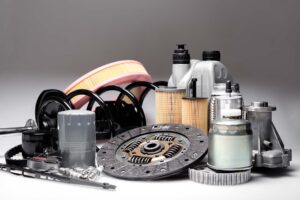Gas or no gas? That is the question! With the sales of hybrid electric vehicles (HEV) increasing by a whopping 30% each year, it’s natural to wonder about what they’re packing under the hood. Namely, do hybrid cars use gas? How exactly do they work? Let’s dive right into it and see what makes these four-wheelers the future of eco-friendly driving.
Short & Sweet – Do Hybrid Cars Use Gas?
Yes, absolutely – hybrids do use gas. However, the real secret is that they don’t rely on it as much as traditional cars, both classic and modern. They’re powered by both a gasoline engine and an electric motor, and this clever combo makes them super efficient, especially in city driving.
What Type of Gas Does a Hybrid Car Use?
So, do hybrid cars use regular gas? Yes, just like most standard vehicles, hybrids typically run on regular gasoline. While diesel ones exist, they’re more commonly found in heavy-duty machines like locomotives, not your everyday ride.
For most hybrids, regular fuel works perfectly fine, but some models may require premium gasoline, such as 91 or 93 PON, to get the best performance. So, it’s always good to check the car’s manual to see what grade of fuel keeps that hybrid engine happy and running efficiently. No one likes to get back on the road just to realize they’ve put the wrong gas in the car!

Part Gas, Part Electric – When Do Hybrid Cars Use Gas?
Hybrids and fully electric vehicles are becoming quite the stars of the automotive world, and the numbers prove it! In the second quarter of 2024, sales of HEVs and EVs in the US jumped to 18.7% of all new light-duty vehicle sales, up from 17.8% in the first quarter.
So, what makes these eco-friendly rides so popular? Well, it’s all about the blend of efficiency and power! But before we dive into their inner workings, let’s break down the three main types:
- Mild hybrid – uses a small electric motor to assist the gasoline engine but doesn’t drive the car on electricity alone,
- Full hybrid – can run on either gasoline or electricity (or both), giving you more flexibility depending on driving conditions,
- Plug-in hybrid – charges its electric battery by plugging in, with the ability to run entirely on electricity for short distances before switching to gas.
Here’s the Science Behind Hybrid Engines
Believe it or not, hybrids aren’t a new invention, and their vehicle evolution spans over 100 years. Way back in 1899, Ferdinand Porsche (yes, that Porsche) developed the first hybrid vehicle – the Lohner-Porsche Mixte. This quirky machine combined an electric motor with a gasoline engine, showing that two power sources could work together in harmony.
Porsche was way ahead of his time, proving that these four-wheelers weren’t just science fiction – they were the future. This clever partnership is the same basic principle that HEVs use today. The electric motor and gasoline engine work together, seamlessly switching to maximize fuel efficiency while still keeping you on the move.

Regenerative Braking – What Is It Exactly?
Regenerative braking is one of the coolest features in hybrid cars. Instead of wasting energy when you hit the brakes, like in a regular gas car, hybrids use that slowing-down motion to generate electricity. It’s like turning your car’s brakes into a mini power plant!
The energy that’s usually lost as heat gets captured and stored in the battery, giving the electric motor a little extra juice for later. It’s a smart way to extend your battery life and save fuel, making your prized ride more efficient without you even noticing.
The best part? The best part? Regenerative braking kicks in mostly when you’re slowing down, coasting, or driving in stop-and-go traffic, which means it’s perfect for cities, especially the ones with the worst drivers. So, every time you hit the brakes at a red light, the car is secretly recharging itself, like a phone plugging in for a quick boost.

Does This Eco-Friendly Ride Really Save You Gas?
By now, it’s pretty clear – HEVs are like the gymnasts of the automotive world – flexible, efficient, and saving money while they do their fancy flips between gas and electricity. While that’s nice and all, the real magic lies in how they pull it off. Let’s break down exactly how these eco-friendly rides stretch every drop of fuel:
Stop-and-Go Traffic? Hybrids Love It!
As we’ve just discussed, hybrids thrive in stop-and-go situations. With their electric motors doing the heavy lifting at lower speeds, they barely touch their gas engines when cruising through the city stress. Perfect for those rush-hour gridlocks!
Engine Shut-Off? The Ultimate Power Nap!
When sitting at a red light or idling in traffic, many hybrids simply shut the gas engine off entirely. This means no burning fuel while you’re stuck in a coffee drive-thru. And when you’re ready to roll again? The engine quietly jumps back into action like nothing happened, saving fuel with zero effort on your part. After all, why run when you don’t have to?
Regenerative Braking? Free Fuel on the Go!
Out of all fuel-saving strategies, regenerative braking is the ultimate cheat code. Every time you slow down, the car is busy converting that kinetic energy into electric power, which gets stored in the battery. That’s like getting free fuel from your own driving! It might not fully charge the vehicle, but it definitely helps you squeeze out a little more mileage before the next fill-up.
Aerodynamics? Slicing Through Air Like a Pro!
Hybrids aren’t just smart under the hood – they’re designed to be as aerodynamic as possible, meaning they cut through air resistance more efficiently than the average car. Less drag equals less effort for the engine, which translates to – you guessed it – less gas used. It’s all about working smarter, not harder.
Choosing Efficiency? The Power of Different Driving Modes!
Many hybrids come with different driving modes, like “Eco” or “EV,” that allow you to prioritize fuel efficiency over power. Switch to these modes, and the four-wheeler optimizes the balance between the electric motor and gas engine to minimize fuel consumption. Every mile in these modes keeps more cash in your pocket, all while being gentler on the planet.
Stop-And-Go Traffic Is a Hybrid’s Playground – Here’s Why It’s the Best Option for a City Driver
Hybrids are built for the hustle and bustle of city streets. Besides their fuel-saving skills, hybrids are incredibly quiet, especially when running on electric power. So, instead of rumbling through neighborhoods like a dinosaur, they silently glide past, giving you a peaceful drive and sparing everyone else from unnecessary noise pollution.
And let’s talk about emissions – because in cities, every little bit counts. Hybrids produce fewer emissions, which is a big deal for urban areas where air quality can be a problem. They’ll help reduce your carbon footprint and contribute to cleaner air in those congested city centers. So, not only are hybrids a win for your wallet, but they’re also a win for the environment and everyone sharing the road!
Parking and Charging – It’s Easier Than You Think
With the exception of plug-in hybrids (PHEV), these vehicles don’t need special charging stations like fully electric cars. They charge themselves as you drive. As for parking, hybrids are often more compact, so they fit into tight city spaces with ease.
No more stressing over parallel parking or awkwardly squeezing into small spots! And since they’re so quiet, you won’t disturb the whole block with a roaring engine as you slip in and out of your parking spot.

What About Long Road Trips? Can Hybrids Handle It?
Long road trips along the famous US routes might seem like the ultimate test for a hybrid, but don’t worry – these cars are more than ready to hit the open road. While hybrids shine in city driving, they’re no slouches on highways either.
When you’re cruising at higher speeds, the gas engine takes the lead, offering the power you need to tackle long stretches of road. But hybrids still find ways to stay efficient. On downhill stretches or when you slow down, the electric motor kicks back in, giving the gas tank a little break and stretching out that mileage.
And here’s the thing – HEVs are built for comfort. They come packed with all the modern features you’d want on a road trip, from advanced cruise control to infotainment systems that keep those long hours on the road fun.

What Are the Most Popular Models on the Roads Today?
These days, it seems like every manufacturer is jumping on the hybrid bandwagon, and for good reason – these eco-friendly rides are taking over the streets! With hybrids offering the perfect balance of gas savings, style, and modern tech, it’s no wonder they’re becoming the go-to choice for drivers who want a little green in their garage.
But with so many options, which hybrids are cruising ahead of the pack? Here are some of the most popular models you’ll see zipping around:
- Toyota Prius – the OG that started it all,
- Honda Accord Hybrid – blending fuel efficiency with sleek style,
- Ford Escape Hybrid – an SUV for those who need more space,
- Hyundai Ioniq – eco-friendly and packed with tech goodies,
- Toyota RAV4 Hybrid – combining fuel-saving power with SUV versatility.
What’s Next – Will We All Be Driving Hybrids Soon or Is the Future Fully Electric?
The hybrid revolution is still going strong, but the future? Well, it might be fully electric. Hybrids are like the perfect middle step between traditional gas cars and all-electric vehicles, making them a great option as we transition to greener transportation.
They’re efficient, practical, and don’t require a total lifestyle change like electric cars (no hunting for charging stations!). But with EVs advancing quickly, hybrids might eventually take a backseat. That being said, they still have a lot of road left to cover. As battery technology improves and manufacturers continue to innovate, hybrids could remain a popular choice for drivers who aren’t quite ready to go fully electric.
Hybrid or Not? Time to Choose Your Eco-Sidekick!
In the great debate of gas vs. electric, hybrids are proving to be the perfect middle ground. They’re fuel-efficient, eco-friendly, and packed with modern features, making them an excellent choice for city drivers and road trippers alike.
Whether you’re all about saving money at the pump or doing your part for the planet, hybrids offer the best of both worlds. So, is a hybrid the right option for you? The choice is entirely yours!








